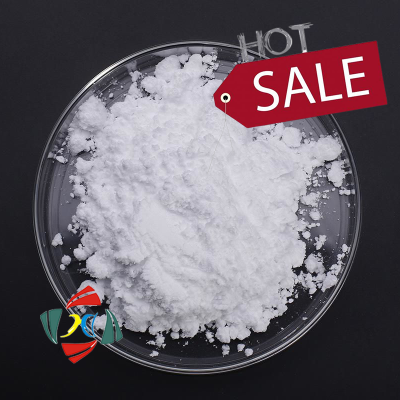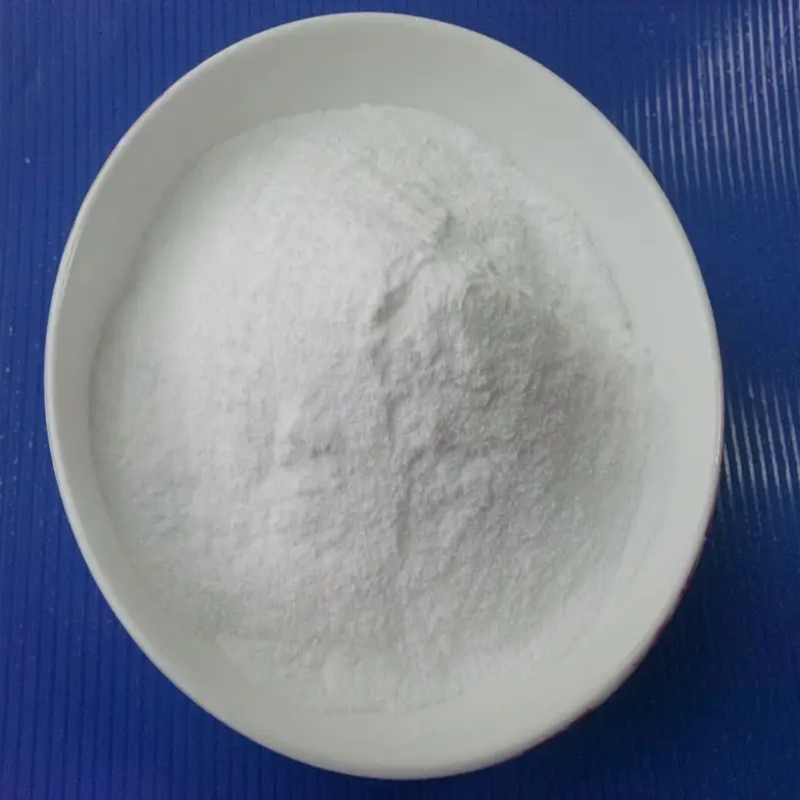-
Categories
-
Pharmaceutical Intermediates
-
Active Pharmaceutical Ingredients
-
Food Additives
- Industrial Coatings
- Agrochemicals
- Dyes and Pigments
- Surfactant
- Flavors and Fragrances
- Chemical Reagents
- Catalyst and Auxiliary
- Natural Products
- Inorganic Chemistry
-
Organic Chemistry
-
Biochemical Engineering
- Analytical Chemistry
- Cosmetic Ingredient
-
Pharmaceutical Intermediates
Promotion
ECHEMI Mall
Wholesale
Weekly Price
Exhibition
News
-
Trade Service
*For medical professionals only
In recent years, neurodegenerative diseases such as Parkinson's disease and Alzheimer's disease have attracted social attention
.
Due to the aging of the population, the incidence of neurodegenerative diseases is increasing, but at the same time, the drug development related to it has not made breakthrough progress, which is very tortuous
.
Therefore, the discovery of new drug targets for the treatment of neurodegenerative diseases is crucial
.
The inflammatory response is a defense mechanism of the immune system in the face of infection and injury, and the central nervous system is no exception
.
In the face of various infections, brain damage, or toxins and other signals, immune cells in the nervous system, such as microglia, are activated, creating a series of neuroinflammation
.
A normal neuroinflammatory response repairs damaged tissue and has a protective effect on the nervous system; Abnormal neuroinflammatory responses are strongly associated
with the occurrence and progression of neurodegenerative diseases.
Usually, abnormal neuroinflammation associated with neurodegeneration is triggered by the activation of microglia, so it seems that starting from inhibiting the activation of microglia may be beneficial for the treatment
of neurodegenerative diseases.
This time, Peking University's Tu Pengfei/Zeng Kewu team dug up treasures in Chinese medicinal materials
.
Tu Pengfei/Zeng Kewu's team found that the natural small molecule isolated from the Chinese medicine Mustang chase, Mustang chasel B (EB), can inhibit the activation of microglia by deubiquitinating enzyme USP7, thereby achieving anti-neuroinflammatory effects
.
This study reveals for the first time that deubiquitinating enzyme USP7 is a potential new drug target for the treatment of neurodegenerative diseases, providing a theoretical basis
for drug development for neurodegenerative diseases.
The article was recently published in Science Advances [1].
Screenshot of the first page of the paper
Mustang chaser is a common Chinese herbal medicine used to treat chronic bronchitis, and wild horse chaselactone B (EB) is a semiterpenoid compound
isolated from it.
Figure 1.
Mustang chaselactone B
In the study, the researchers first found through high-throughput screening that EB could inhibit BV-2 microglia by downregulating inflammatory mediators such as nitric oxide (NO), interleukin-6 (IL-6), and tumor necrosis factor-α (TNF-α
).
To determine its mechanism, they synthesized biotin-Mustang chaser B (Bio-EB) and applied the probe to preliminarily confirm that the deubiquitinating enzyme USP7 is the target protein
for EB.
To detect the specificity of EB's binding to USP7, they used surface plasma resonance (SPR) and measured the dissociation constants of EB and USP7 to 6.
85 μM, and EB was able to specifically bind to USP7
in 34 deubiquitinating enzyme (USPs) family proteins.
Ubiquitination is a post-translational modification that is widespread in nature, and proteins labeled by ubiquitin are degraded
by cells.
At the same time, USPs can also reverse the process of ubiquitination, removing ubiquitination modifications
.
Of these, USP7 is a deubiquitinated enzyme
present in all eukaryotic cells.
There is not much
research on the current association of USP7 with microglia-mediated neuroinflammation.
Here, to verify that microglia are inhibited due to EB's binding to USP7, the researchers used siRNA techniques to interfere with the expression of USP7, and in microglia where USP7 was inhibited, the downregulation of a series of inflammatory mediators caused by EB was reversed
.
Figure 2.
After siRNA interfered with USP7 expression, the downregulation of EB-mediated inflammatory factors was reversed
The above series of experiments have demonstrated that EB specifically binds to USP7, thereby inhibiting microglia-mediated inflammatory responses
.
Next, the researchers used SRP experiments, protein structure reconstruction and elusion, fluorescence resonance energy transfer experiments (FRET) and other techniques to explore
the binding patterns and sites of EB and USP7.
It was found that EB achieved allergic inhibition
of USP7 by binding to the non-catalytic site HUBL domain of USP7.
In the resting state, USP7 is in an open conformation, thus achieving self-inhibition, while the binding of ubiquitinated substrates will lead to the formation of a closed conformation to exert catalytic effects
.
The insertion of EB induces USP7 to form an overly open conformation, thereby inhibiting it from exerting deubiquitination
.
This new mode of action has not been reported before
.
And the researchers further proved that USP7's Cys576 is a key site for
EB to inhibit microglia and exert anti-inflammatory effects.
Figure 3.
USP7's closed, open, and over-open conformations
So, how does USP7 hook up with microglia? To know, USP7 can act on a variety of ubiquitinates, what kind of protein substrate can activate microglia?
With stable isotope labeling (SILAC) and quantitative proteomic analysis, the EB-responsive protein substrate Kelch-like ECH-associated protein 1 (Keap1) has successfully caught the attention of researchers, and Keap1 has been shown to play an important role
in the inflammatory response.
Further studies showed that EB inhibits the inflammatory response
by inhibiting the deubiquitination of USP7, accelerating the degradation of its protein substrate Keap1, thereby modulating the Keap1/Nrf2 signaling pathway.
The binding area of USP7 and Keap1 is also revealed, although it is worth noting that EB is not directly bound to Keap1
.
After learning this, it was the mouse's
turn to appear.
Before starting in vivo experiments in mice, the researchers tested EB's pharmacokinetic properties
.
By measuring plasma and intra-brain EB concentrations after intragastric administration of 0.
25 to 3 hours, they concluded that EB had good oral bioavailability and was able to reach therapeutic concentrations
through the blood-brain barrier.
They then began in vivo experiments
with EB.
They constructed a mouse model with a Usp7 ineffective allele (Usp7+/−) to detect whether EB affected the expression
of microglial markers Iba-1 and CD68.
The results showed that in the mouse model of Usp7WT, the expression of Iba-1 and CD68 stimulated by bacterial lipopolysaccharide stimulation was inhibited by EB, and EB was able to reduce branching points more effectively, protect the morphology of microglia, reduce the production of pro-inflammatory factors such as TNF-α and IL-6, and had significant neuroprotective effects
.
None of the above phenomena were found
in Usp7+/− mice.
Figure 5.
Iba-1, CD68, TNF-α, IL-6, and MAP2 IHC staining in Usp7WT and Usp7+/− mouse models varied with EB concentration
Not only that, they also demonstrated again in Nfr7WT and Nfr-/- mouse model experiments that EB inhibits microglial activation and exerts anti-neuroinflammatory effects
by modulating the USP7-Keap1/Nrf2 pathway.
Finally, the researchers explored the possibility
of EB treating neurodegenerative diseases.
They used an inherited rapid ageing facilitation mouse model (SAMP8) to mimic aging-related dementia symptoms and perform water maze experiments
.
The results showed that the SAMP8 mouse model treated with EB had a significant improvement in memory on day 5, and the nylonite in the cerebral cortex and hippocampus decreased due to aging also increased
significantly under the action of EB.
There were more Iba-1 and CD68 in the brains of SAMP8 mice without EB treatment compared to its control strain, SAM resistant mice (SAMR1), but these markers decreased
significantly after EB use.
Moreover, EB can more effectively reduce the branching points of microglia, protect the morphology of microglia, reduce the production of TNF-α and IL-6, improve the expression of NQO1 and HO-1, and have significant neuroprotective effects
.
Figure 6.
Left: Water maze experiment; Right: Iba-1 SAM mouse cerebral cortex IHC staining and Nishih staining
Subsequently, they also demonstrated the neuroprotective effects of EB and the reversal effect
on neurological diseases in a mouse model of Parkinson's.
This study reveals for the first time the link between USP7 and neurodegenerative diseases and finds that its non-catalytic domain HUBL is a potential target for drug development
.
As the first small molecule inhibitor targeting the non-catalytic domain of USP7, Mustang Chase Lactone B provides ideas for the subsequent development of more USP7 inhibitors, and also provides a theoretical basis
for drug development of neurodegenerative diseases.
References:
[1] Zhang XW, Feng N, Liu YC, et al.
Neuroinflammation inhibition by small-molecule targeting USP7 noncatalytic domain for neurodegenerative disease therapy.
Sci Adv.
2022; 8(32):eabo0789.
doi:10.
1126/sciadv.
abo0789
Responsible editorEddie Zhang







